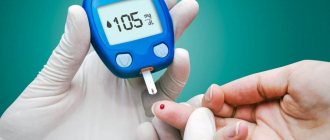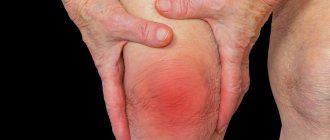Triglycerides
- The most common type of fat in the body. The foods people eat, whether from animal or plant sources, can affect triglyceride levels in the blood. There are many different types of fats, from polyunsaturated fats in olive oil to saturated fats in red meat. They all help raise triglyceride levels in the body, but they do it in different ways.
When a person eats more calories than their body needs, they store those extra calories as triglyceride fats. When the body needs more energy, it consumes these fats.
Triglycerides are important for health, but high levels increase the risk of heart disease, which is a leading cause of death. Lowering triglyceride levels and other risk factors can reduce a person's chance of developing heart disease.
There are many ways to safely lower triglyceride levels.
Reduce your calorie intake
Salads and other dishes with vegetables contain fewer calories and more fiber, which can lower triglyceride levels. Regularly consuming more calories than the body can burn will result in excessive triglycerides in the body. One way to lower your blood triglyceride levels is to eat fewer calories each day. Losing weight by 5 to 10 percent helps reduce triglyceride levels by 20%. There is a direct relationship between the degree of weight loss and the reduction in triglyceride levels.
Folk remedies - Top 4
In folk medicine there are at least 10 effective means for normalizing the balance of triglycerides in the blood. The most effective among them are:
Bean pod decoction
It will help speed up metabolism and also saturate the body with minerals, potassium, and zinc. Prepare as follows:
- soak 100 grams of dried bean pods overnight (only the boxes, without the bean seeds);
- in the morning - drain the water, add new water and bring to a boil over low heat (1 liter of water per 100 grams of pods);
- after 20 minutes, remove from heat and let cool to room temperature;
- strain through 2 – 3 layers of gauze.
Take 50 milliliters 3 times a day 30 minutes after meals. The course of treatment is 2 months. This remedy will also help you quickly get rid of 2 - 3 extra pounds.
A mixture of garlic, lemon and horseradish root
This is an extremely effective means for cleaning blood vessels. This is especially noticeable in the rapidly decreasing levels of low-density cholesterol. Prepare as follows:
- mix 1 head of garlic, 25 grams of grated horseradish root, 2 medium lemons (including peel);
- Grind everything thoroughly using a meat grinder, blender or food processor;
- leave overnight in a cool, dark place.
Take 2 times a day, 10 grams (1 teaspoon) with meals. The same remedy will help comprehensively strengthen the immune system of a weakened body.
Infusion of crushed flax seeds
To prepare an infusion from flax seeds, fresh flax seeds are taken. They are first passed through a meat grinder; it is better to grind them with a blender.
About 30 grams of the resulting slurry is poured overnight with a glass of boiling water. In the morning - squeeze and drink on an empty stomach (20 - 30 minutes before the planned meal).
Drink once a day, course – up to 30 days, then a break of 2 weeks.
Linden flower tea
A tasty, simple and effective remedy for quickly lowering the concentration of triglycerides in the blood. Tea is prepared from flowers collected at the very beginning of the tree's flowering.
Dry them in a dark place with good ventilation. To prepare tea you will need only 0.5 - 1 teaspoon of dried flowers (per 1 glass of the finished drink).
You can drink up to 2 times a day, add honey and sugar to taste. This remedy can be given even to small children (from 3 years old, according to doctors’ recommendations).
Choose the right fats
The body needs fats to function properly, but some fats are healthier than others. Choosing healthy fats can lower triglyceride levels. Solid fats come from meats, full-fat dairy products, and some tropical oils such as coconut and palm. These foods contain trans fats and saturated fats. Trans fats and saturated fats increase triglyceride levels and should be replaced wherever possible.
Unsaturated fats, especially polyunsaturated fats (PUFAs), lower triglyceride levels. Avocados and olive oil contain monounsaturated fats. Omega-3 fats are found in fish oil, flaxseed and cold-water fish such as salmon and sardines. You can add PUFAs to your diet by consuming these foods. Instead of a steak or hamburger, which is high in saturated fat, you can opt for a salmon fillet or a tuna sandwich. Animal products such as lean meats, fresh poultry, low-fat or low-fat dairy products and seafood are also good options. Fats should make up 25 to 35 percent of the diet.
Limit carbohydrates
You should limit your total carbohydrate intake to less than 60% of your recommended daily calorie intake. If you consume more carbohydrates than you need, your body will store them as fat. There are many ways to avoid carbs, such as eating lean burgers with lettuce instead of a sweet cream bun. Some carbohydrate foods, including some grains, may be beneficial in the diet. However, refined carbohydrates such as white bread provide few nutrients and add calories to the diet.
To get more healthy carbohydrates, choose whole grains, oatmeal and vegetables such as carrots. For dessert, choose fresh or frozen blueberries, blackberries or raspberries instead of sweet baked goods. These fruits can reduce sugar cravings and also provide healthy carbohydrates. Not only are unrefined carbohydrates a source of dietary fiber, but they also provide faster and longer-lasting satiety than refined carbohydrates because they release their energy more slowly.
Reduce your sugar intake
Sugar is a form of carbohydrate and is high in calories. Foods high in simple sugars, especially refined fructose, can raise triglyceride levels. Added sugar comes in many forms, including:
- white sugar
- Brown sugar
- honey
- cane juice or cane syrup
- corn sweetener or corn syrup
- fruit juice concentrate
- glucose
- fructose
- dextrose
- maltose
- lactose
- sucrose
- syrups such as maple, agave and molasses
Added sugar should be avoided to reduce triglyceride levels.
Instead of sugar, sprinkle spices such as cinnamon or ginger onto your cereal or oatmeal to add flavor. Choose fruit desserts instead of ice cream or sticky puddings. When purchasing ready-to-eat foods, remember that many of them, including some savory foods such as tomato ketchup, contain added sugar.
Every 4 grams of sugar is equivalent to 1 teaspoon. Cardiologists recommend a daily maximum sugar intake of 25 g (about 6 teaspoons) for women and 36 g (9 teaspoons) for men.
Choose your drinks carefully
Drink water instead of sweetened drinks. Even bottled juices can be high in sugar. Beverages often contribute significantly to total carbohydrate and sugar intake. Fruit drinks, soft drinks, and other sugar-sweetened beverages are among the major sources of added sugars in the diet.
Alcohol also has a direct effect on triglyceride levels in some people. People seeking to lower triglyceride levels should avoid drinking alcohol. Avoiding drinks containing added sugar can significantly reduce your overall calorie intake. Instead of high-sugar drinks, people can choose low-calorie drinks such as water or tea. On a hot day, instead of reaching for a cold drink, try adding some fruit juice to a glass of sparkling water.
Cholesterol
To reduce triglyceride levels, it is recommended to follow a diet and lead a healthy lifestyle. Such methods are especially effective if you have the maximum permissible levels (150-199 mg/dL).
Diet and a healthy lifestyle should include:
- Maintaining a healthy weight.
- Limit fat and sugar intake.
- Active lifestyle.
- Limited alcohol consumption.
You can also take medications to lower your triglyceride levels. The drugs may be used if you have risk factors for coronary artery disease. In this case, your doctor may first give you treatment to lower your LDL levels and raise your HDL levels, and then work on your triglycerides.
Controlling LDL and HDL levels can reduce the risk of heart attack and death, but the risks of high triglyceride levels are not as well known. For more information about optimal levels and treatment of high cholesterol, see the section entitled "High Cholesterol."
Initial treatment
Diet and a healthy lifestyle are the first steps to help you lower your triglyceride levels.
Diet and healthy lifestyle include:
- Maintaining a healthy weight or limiting calories to lose weight.
- Limited consumption of carbohydrates and unhealthy fats.
- Active lifestyle.
- Limited alcohol consumption
- To give up smoking.
- Maintaining blood sugar at near-optimal levels if you have diabetes.
Adding fish oil (omega-3 fatty acids) to your diet will help lower triglyceride levels. You can eat fish at least 2 times a week or take supplements. Fatty fish varieties high in omega-3 fatty acids include salmon, tuna and mackerel.
You may try Therapeutic Lifestyle Changes (TLC) or the TLC Diet. TLC is a combination of diet and healthy lifestyle that will help you lower your cholesterol.
To limit the amount of carbohydrates you eat, it can be helpful to know how many carbohydrates are in different foods.
Alcohol has a particularly strong effect on triglyceride levels. Regular heavy drinking and even one binge drinking session can cause triglyceride levels to rise significantly. Binge drinking can cause triglyceride levels to spike, which can lead to pancreatitis. Your doctor will ask you to limit or completely stop drinking alcohol.
Before you start exercising, talk to your doctor about its safety. You can also consult a nutritionist to create a healthy diet.
Your doctor will test you for conditions that may cause high triglyceride levels, such as hypothyroidism, poorly controlled diabetes, and kidney disease. Elevated triglyceride levels can also be caused by taking certain medications. Your doctor may change your dosage or tell you to stop taking this drug.
Current treatment
If your triglyceride levels do not fall despite living a healthy lifestyle, you may also need to take medications. The treatment your doctor prescribes for you depends on more than just your triglyceride levels. Your doctor will also take into account your cholesterol levels and other risk factors for heart disease.
If you have high cholesterol and other risk factors for heart disease, you may need a combination of medications that target different types of cholesterol. You may be assigned:
- Statins.
- Fibrates.
- Nicotinic acid.
Statins are used to lower LDL levels. They can also lower triglyceride levels and even increase HDL levels. Typically, the more a drug lowers LDL levels, the more it lowers triglyceride levels. When LDL reaches optimal levels, you can start taking fibrates or niacin to more effectively lower triglyceride levels. Both of these drugs also increase HDL levels.
If your triglyceride levels are very high, your doctor may first prescribe medications to lower your triglyceride levels to prevent damage to your pancreas.
People taking statins should be wary of fibrates. Combining these drugs increases your risk of developing a life-threatening muscle disease called acute skeletal muscle necrosis, which can lead to kidney failure. Therefore, before combining these drugs, it is necessary to check the condition of the kidneys and liver. If you experience muscle pain, contact your doctor immediately.
Treatment for exacerbation of the disease
If you haven't taken medications to lower your triglycerides before, you'll probably start doing so. If you are already taking medications and they are not working as expected, your doctor may change your dosage or prescribe you a new medication. You may take medications such as:
- Statins.
- Fibrates.
- A nicotinic acid.
- Omega-3 fatty acids (fish oil).
People taking statins should be wary of fibrates. Combining these drugs increases your risk of developing a life-threatening muscle disease called acute skeletal muscle necrosis, which can lead to kidney failure. Therefore, before combining these drugs, it is necessary to check the condition of the kidneys and liver. If you experience muscle pain, contact your doctor immediately.
Your doctor may prescribe medications that contain omega-3 fatty acids (such as Lovaza). Omega-3 fatty acids are also found in fatty fish such as salmon or tuna. But the drugs are a highly concentrated form of omega-3 fatty acids, which help lower triglyceride levels. They may raise LDL levels slightly, so your doctor should monitor your cholesterol levels closely if you take Lovaza.
You should think about whether you can lead a healthy lifestyle. You may need help achieving your goals. Consider working with a registered dietitian to help you develop a healthy diet. Remember the importance of exercise - visit a sports center or hire a personal trainer who will create an interesting, fun and effective exercise program for you. You can choose walking to increase your physical activity.
Exercises
Physical activity also plays a vital role in reducing triglyceride levels. Burning calories ensures that the body uses more of its triglycerides. Any exercise is beneficial, but the extent of its impact will depend on:
- initial triglyceride levels
- exercise intensity level
Walking for 30 minutes every day is a great way to get started. It is recommended that adults do 150 minutes of moderate aerobic activity, 75 minutes of vigorous aerobic activity, or a combination of both each week.
Drugs that increase triglyceride levels
Some medications increase triglyceride levels. According to a study conducted in 2021, these include:
- oral estrogens
- corticosteroids
- retinoic acid derivatives
- beta blockers
- thiazide diuretics
- protease inhibitors
- bile acid sequestrants
- antipsychotic drugs
- cyclosporine and tacrolimus
- L-asparaginase
- interferon alpha-2b
- cyclophosphamide
You should not stop taking the drug without talking to your doctor first, as this may be dangerous. If you have concerns about the side effects of this medicine, you should seek professional medical advice.
Why might their level be increased?
Short-term deviations from the norm of approximately 0.2 - 0.3 mmol/l are not something critical. This most often occurs after a heavy snack with a lot of fatty foods.
But within 1–2 hours, the body independently normalizes the balance of tringlycerides in the blood, activating the processes of their breakdown into energy.
Why do triglycerides increase? There can be many reasons, but the most common among them are:
- non-compliance with a healthy diet (abuse of fatty, sweet, and alcohol);
- problems with the functioning of the endocrine system (imbalance of hormones responsible for regulating metabolism);
- taking certain medications (directly affecting the functioning of the hormonal system).
Elevated triglyceride levels can also occur during pregnancy. This is not a deviation, it is not dangerous, but it is advisable to periodically consult a doctor on this matter to monitor the condition of the pregnant woman herself and her unborn child.
Check your health
The most common causes of high triglyceride levels are related to diet and metabolism. In addition to being overweight and eating a high-fat, high-carbohydrate diet, certain medical conditions may increase your risk. According to a study published in the journal Nutrients
, Other risk factors for high triglyceride levels include type 2 diabetes and kidney disease such as uremia.
Genetic factors can also make a person more likely to develop high triglyceride levels under certain circumstances. If tests show that a person's triglyceride levels are high or they have a family history of high triglyceride levels, the doctor may suggest further testing. This can help determine if there is an underlying health problem or give advice on how to keep your triglyceride levels low. Triglyceride levels may also increase during pregnancy.
What are triglycerides?
The word triglyceride literally means a molecule with three fatty acids bound to a glycerol molecule. Triglycerides are a common form of lipids (fats) in the plant and animal kingdom.
In general, most of the fats you eat contain triglycerides, including animal fat, vegetable oils, unsaturated fats and trans fats.
When your food contains more calories than you burn, your body stores triglycerides in your fat cells or adipocytes for later use. These adipocytes form your adipose tissue, or fat deposits.
Drugs to lower triglyceride levels
If the above methods don't work, your doctor may prescribe medications such as statins to lower triglyceride levels. Some doctors prescribe fibrates, which are lipid-lowering drugs, to patients who cannot tolerate statins. Some studies have shown that adding niacin, fibrates or fish oil to statin treatment may make it more effective. However, more research is needed to confirm these benefits and determine whether these treatments are safe and the best way to use them.
The importance of triglyceride levels
If a person's triglyceride levels are too high, they are at high risk of developing certain diseases and disorders. According to a study in the journal Lancet Diabetes & Endocrinology, high triglyceride levels play an important role in cardiovascular diseases such as coronary heart disease and atherosclerosis.
High levels of triglycerides can have the same effect because they cause plaque to build up in the arteries. Plaques are a combination of cholesterol, triglycerides, calcium, cellular waste, and fibrin, which is a material the body uses to clot blood. The buildup of plaque increases the risk of heart disease because it blocks the normal flow of blood in the arteries. The plaque can also break off and form a blood clot, which can cause a stroke or heart attack. Triglycerides and cholesterol levels are two of the most important factors to control for a healthy heart. There is also a risk of damage to the pancreas if triglyceride levels become too high.
To reduce triglycerides – change your lifestyle!
If you really want to recover and lower the level of TG in the blood, then be immediately prepared to give up many of the “charms” of life. That is, radically change your lifestyle: turning away from destructive habits, store-bought “goodies” and an overly sedentary lifestyle. Perhaps make an appointment with a psychologist - if you “treat your soul” with alcohol, sweets or cigarette smoke!
The “keys” to the slavery of bad habits can be found from good psychologists!
Say a resounding NO to bad habits!
Quitting SMOKING is one of the most important conditions for reducing the risks of developing many cardiovascular diseases, as well as reducing the level of triglycerides in the blood in women and men. In itself, SMOKING not only “thickens” the blood and damages the walls of blood vessels, but also significantly reduces the ability of our body to normally control lipid metabolism (metabolism), i.e. including – and triacylglycerol (TAG) metabolism.
In addition, by quitting smoking, you will not only improve your health (and save your budget), but also save those around you - loved ones (usually those suffering from passive smoking).
At a minimum, for the period of reducing triglycerides, completely give up ALCOHOLIC DRINKS (especially: sweet/fortified wines, liqueurs/vodka products and beer), which can very seriously “fluctuate” TG levels. Once the triglyceride levels in your blood have decreased to normal levels, do not drink heavily or frequently (i.e. above the WHO norm)! Otherwise, all your treatment (both time, funds for medications, and other nuances) will be “cancelled” very quickly.
An equally harmful habit, along with “nicotine” and “alcohol” (supposedly “calming” the nerves and soul), is excessive passion for computer games (social networks, news, etc.). That is, when we spend all our leisure time passively, sitting in front of the computer. “Eating” the whole thing with pre/saturated trans fats – store-bought “delicacies”.
Simply put, by participating in emotionally/intense computer games, we provoke additional releases of lipids into the body (including triglycerides), the main task of which is to protect our body and give it strength - to fight! Only our body remains motionless, because our “computer struggle” is virtual! This circumstance is one of the auxiliary reasons - an excess of triglycerides in the blood. Along with the development of any other diseases.
This is what it looks like from the outside! One more fight in the “WOT-random” and sleep!
Become a calorie expert!
Most likely, since you have found this material, your main goal is to reduce triglyceride levels. That is why, literally from tomorrow (or better yet, today), start becoming real experts in the “area of calories.” Because it is their “surplus” that our body “converts” into triglycerides - “sources” of energy for the future / “in reserve”. What does this look like in practice?
Pay special attention to HOW MANY calories you consume throughout the day? That is, when – today or tomorrow – you go to the supermarket, then choose your “snacks” not by their beautiful and appetizing appearance, but by their COMPOSITION! Be sure to look at the packaging: HOW MANY CALORIES do your “treats” contain!? By the way, if you have never looked at the composition of products, you will be unpleasantly surprised by the impressive number of various “somethings there” / substitutes, dyes and other “joys” for the body. And sometimes – even past the expiration date!
Don't let yourself be deceived! See lineup and date!
How to COMPETENTLY calculate your calorie intake?
Due to the fact that the calorie intake depends on gender (male and female), age, weight and height of a person, and even the level of physical activity, we recommend that you use the classic Harris-Benedict formula. Published by these scientists - separately for men and women - in 1918, and corrected by their “contemporaries” in 1984.
STEP #1
Determine your active metabolic rate (
AMR
). Another name for it is physical activity coefficient.
- Sedentary lifestyle (“sedentary” work / “sedentary” leisure time at the computer) – 1.2;
- Moderate activity (light physical activity / or moderate sports up to 3 times a week / walking up to 3 km) – 1.375;
- Average activity (full-fledged spotting exercises 3-5 times a week / walking up to 5 km) – 1.55;
- Active people (intense physical activity / sports activities 6-7 times a week) – 1.725;
- Professional athletes and people with the same loads (daily) – 1.9.
STEP #2
We use calculation formulas to calculate the basal metabolic rate (
BMR
). That is, the optimal amount of energy (kilocalories) necessary for the normal functioning of our body.
Norm of kilocalories (to reduce TG levels) in women:
BMR = 447.593 + (9.247 * weight in kg) + (3.098 * height in cm) - (4.330 * age in years)
Norm of kilocalories (to reduce TG levels) in men:
BMR = 88.362 + (13.397 * weight in kg) + (4.799 * height in cm) - (5.677 * age in years)
YOU MAY BE INTERESTED IN:
- ONLINE BMI (Body Mass Index) calculator
- ONLINE calculator (ideal weight calculation)
STEP #3
And finally, just multiply
BMR
by
AM R
! The result will be exactly your daily calorie intake!
Here's a simple example:
For a woman of age 42
year, height
165
cm, weight
60
kg, working as a chief accountant at an enterprise (i.e., having both a “sedentary” profession and a “sedentary” position). Of course, not in terms of the risks of imprisonment...
- BMR = 447.593 + (9.247 * 60
) + (3,098 *
165
) — (4,330 *
42
) = 820,55 - BMR * AMR = 820.55 * 1.2 = 984.66.
In total, our chief accountant (a wonderful person and a beautiful woman) should consume NO MORE than 985 kcal per day!
And a few more IMPORTANT rules:
- Never eat BEFORE going to bed!
- Strictly follow the diet!
- It’s better to eat more often, but in SMALL portions!
People like that don't get hired as astronauts!
Physical exercise
To reduce the level of triglycerides in the blood, it is not at all necessary to become a “seasoned” athlete! Moreover, it is even forbidden to immediately establish a “hard” regime of physical activity for yourself. You need to start small / without fanaticism, taking into account your age and state of health. For example, if you have a “sedentary” profession and sedentary leisure time (after work), include in your “schedule”: the simplest MORNING EXERCISE (no more than 5-10 minutes) and an EVENING WALK (20-30 minutes).
And only then, increasing one minute a day, try to reach the normal level: 45 minutes of full-fledged physical exercise (at least 3-4 times a week) and 3/5 kilometer walks - daily! Regarding the first point, here you MUST consult with doctors! Regarding what you can do and what you absolutely cannot do. As for the second point, it is useful for virtually all people (regardless of gender and age). Just try not to replace walks in the fresh air with “walking” on a treadmill in stuffy rooms!
On the Internet you can easily find options for morning exercises for your age and health status. The body will tell you: thank you SO MUCH!
Moderate physical activity can not only reduce the amount of triglycerides in the blood, as well as the conditionally “bad” LDL cholesterol (“the culprit” of atherosclerosis and many cardiovascular diseases), but also increase the level of good HDL cholesterol
. The increased indicators of which, foreign scientists called “LONGEVITY SYNDROME”!









